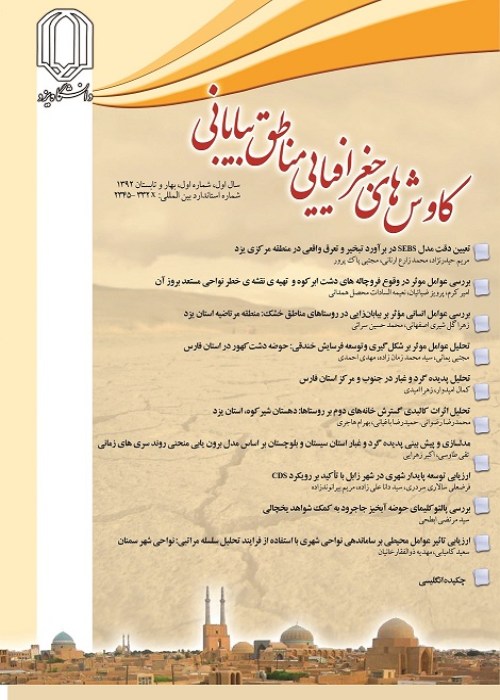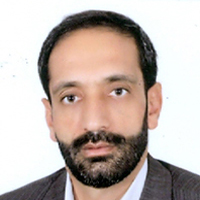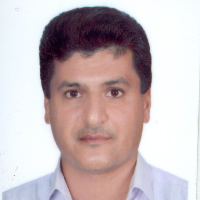Analysis of the Educational Spaces of School in District 2 of Kerman
Education has a very important role in providing human resources, and the progress and development of a society owes to educated human resources that grow and excel in educational spaces. So, the educational space has an effective role in supporting the training of human resources and serves as a key pillar. It alsoplays a fundamental role in educating the community. Numerous factors are effective in increasing the quality of education. The more these factors work together and move in the same direction, the higher the quality of education and the higher the productivity. In the meantime, because the educational space plays an important role in the educational system and is very important in the educational development of a country, and the weight of other factors or, in some cases, higher than some factors plays a role in the educational structure, huge funds are spent for construction every year. Education spaces are costly in the country, but the costs are not optimal because the real needs for educational spaces have not been identified and construction is not done in place. These conditions exist not only in Kerman Province but also in most of the provinces of the country, and they impose irreparable damage on the country's budget. Targeting constructions in education and training, reducing costs, identifying needs, fair distribution of educational spaces in District 2 of Kerman City, predicting the need for educational space in the future, considering the characteristics and behaviors of population and migration in Kerman city, preventing the ineffectiveness of construction costs due to the limited use of educational spaces and recognizing the needs of schools all enhance the education level in the area. The importance of this plan is that it tries to identify the real needs for the construction of educational spaces and to avoid wasting resources and development credits.
The research method in this research is descriptive-analytical. To conduct the research, documentary and library information were needed, so the data were collected from the schools in District 2 of Kerman and then analyzed. The output was presented in the form of a map, chart and table. In the data analysis, after the research data were prepared and recorded on the map of Kerman City, according to the location criteria and the radius of access to the schools for different sections, the spatial distribution of the schools was studied. The output maps showed that the distribution was unbalanced.
There are 186 schools, including 89 elementary schools (first and second elementary, girls’ and boys’ and mixed schools) in District 2 of Kerman. There are also 97 secondary schools (first and second secondary and technical and vocational schools, girls', boys' and mixed). There are 186 schools in District 2. Of these schools, 68 are primary and 75 are secondary schools in Kerman. The areas outside the city of Kerman include the cities of Ekhtiarabad, Zangiabad, Baghin and the villages of Farahabad, Shahrokhabad, Kahnooj Madim, Badamouieh, Hojjatabad, Cheshmeh Gaz and Saadi. Most of the schools are located in the central area of Kerman and in newly built urban areas (Farhangian crossroad to the west of the airport). The number of schools is very low. The average per capita educational space in District 2 of Kerman is 2.83 square meters. The net per capita is 2.5 square meters, and the gross per capita is 3.17 square meters. The average net per capita of the primary schools is 1.90 square meters, which is calculated to be 1.74 square meters for boys' primary schools and 2 square meters for girls' primary schools. The average net per capita of the secondary schools is 3.15 square meters, of which boys' secondary schools are 2.48 square meters and girls' secondary schools are 3.42 square meters. The average gross per capita of the secondary schools is 4 square meters.
The situation of educational space in the schools of District 2 of Kerman was investigated in this study. According to the research process and the research data, including the existing data and the field information collected from schools in the city of Kerman and the output of the GIS Arc software, the following results were obtained: - The existing educational spaces meet the needs of the school population and will not be a serious problem in the physical space due to the decrease in the population growth at the national and local levels, which will continue in the coming years. - The problem of the physical space of schools is not due to the space dimensions but due to the unequal distribution of educational spaces in the city, which has created an unbalanced distribution. - Lack of facilities and equipment is another problem of the schools so that many schools use old and worn equipment and facilities that reduce the efficiency of the education system. Burnout is part of the educational space, as another problem of education, so that 15 schools belong to the years before 1961, 33 schools were built between in the 1961-1981 and their age is between 38 to 58 years, and 63 schools were built after 1981; they are less than 38 years old. Therefore, there is a high relative physical burnout in the schools of Kerman. - The wear and tear of laboratory equipment and workshops has a negative impact on school education. The concentration of schools in the central part of Kerman as well as the middle part of the city and the small number of schools in the newly built part of the city have created an unequal and unbalanced distribution in terms of educational space in Kerman.
- حق عضویت دریافتی صرف حمایت از نشریات عضو و نگهداری، تکمیل و توسعه مگیران میشود.
- پرداخت حق اشتراک و دانلود مقالات اجازه بازنشر آن در سایر رسانههای چاپی و دیجیتال را به کاربر نمیدهد.





